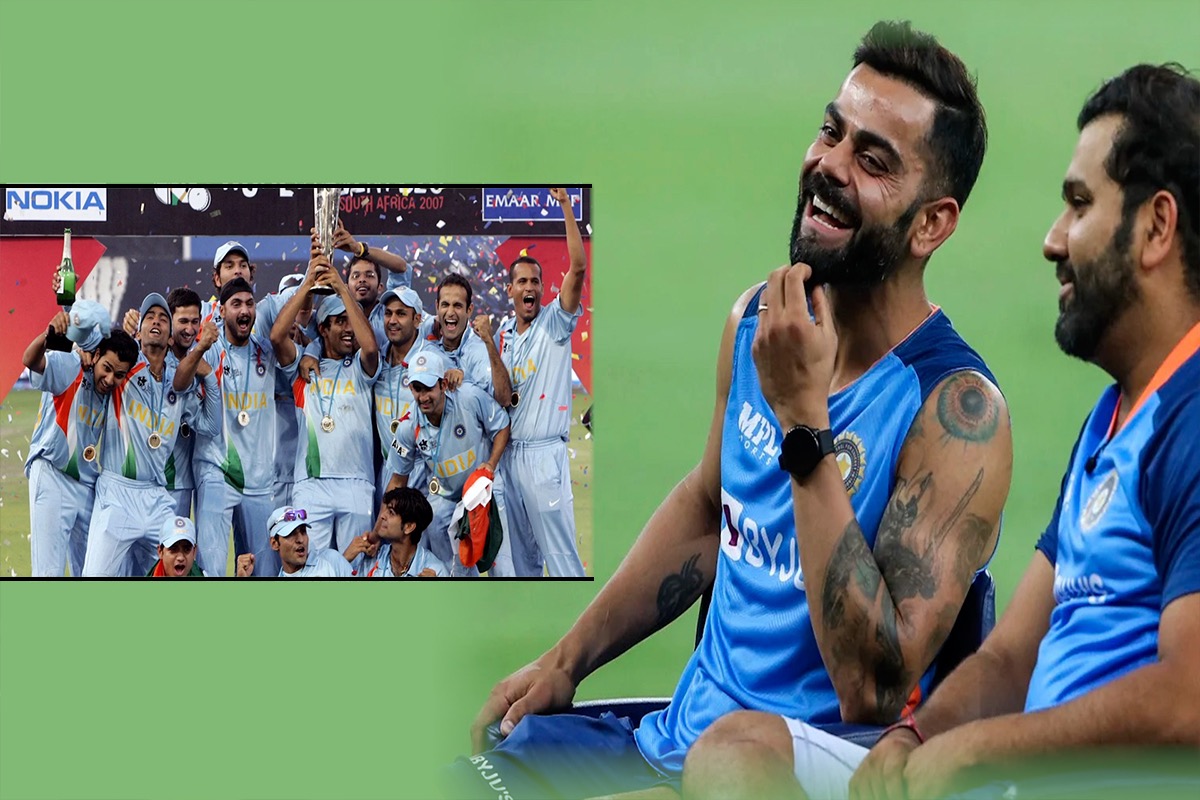On September 24, 2007, India scripted history by edging their arch-rivals Pakistan by five runs in the final and winning the inaugural T20 World Cup. The historic triumph was even more remarkable for the countrymen because just a few months ago, the Indian team had unceremoniously crashed out of the 50-over World Cup in the first round and copped withering obloquy.
The expectations from the team were fairly moderate before the tournament but the MS Dhoni-led unit defied all the naysayers and came up trumps in style as the entire nation erupted in frenzied joy.
The next T20 World Cup is slated to start in mid-October and all the teams are gearing up to come out all guns blazing in the marquee tournament. The New Indian looks at three lessons the current Indian team can take from 2007’s unit –
1) Right mix of youth and experience: After the 50-over World Cup fiasco, which included an array of veterans, the selectors decided to bank on youngsters for the World T20 2007. The T20 format at that time was in its nascent stage and was deemed as the playground of youth. Hence, experienced players like Sachin Tendulkar, Sourav Ganguly, Rahul Dravid, Zaheer Khan, and Anil Kumble were left out of the squad for the World T20.
The team still had players such as Virender Sehwag, Yuvraj Singh, and Harbhajan Singh who had 7-8 years of experience in international cricket. However, cricketers such as MS Dhoni, RP Singh, Sreesanth, Rohit Sharma, Robin Uthappa and Gautam Gambhir had played only a few international matches.
But the right mix worked to their advantage as almost all youngsters contributed handsomely and were enormously aided by the likes of Yuvraj and Harbhajan. RP Singh finished as the third-highest wicket-taker of the tournament with 12 scalps in 7 matches, while Gambhir cracked three half-centuries and scored 227 runs, including a match-winning 75 in the final. Uthappa, Rohit, and Sreesanth also stepped up at critical moments.
The current squad for the 2022 World Cup has a lot of players who are above 30 and while the experience is vital, India must be prudent in nailing the right mix in the playing XI so that they don’t lack the exuberance of the youth.
2) Imaginative and spirited leadership: MS Dhoni was appointed as the permanent captain for India’s limited-overs team just before the 2007 World Cup but the young cricketer impressed one and all by exhibiting fabulous tactical nous and sangfroid during tense moments. Not only did he inspire his team to play a fearless, enterprising brand of cricket but also demonstrated creditable strategic acuity.
A lot has already been talked about him giving the last over of the match to Joginder Sharma in the final against Pakistan. Needing 13 runs off the last over, Misbah-Ul-Haq smashed a six off the first ball. A visibly anxious Joginder’s next ball was a colossal wide. At that stage, Dhoni walked up to him and soothed his nerves by chatting with him in a calm manner. A more composed Joginder bowled a much better delivery which Misbah scooped to Sreesanth at short fine-leg.
In the semi-final against Australia as well, Dhoni had picked Joginder to bowl the last over. Uthappa hadn’t played T20Is before the tournament but Dhoni made him bat at no.3. His confidence in the right-hand batter paid off as Uthappa reeled off brisk cameos against Pakistan and Australia.
The decision to make Yusuf Pathan – who was playing his first T20I – an opener in the final against Pakistan was also a dicey one that ultimately came off nicely. Though Pathan only scored 8-ball 15, he lent a breezy start to the team and set the ball rolling.
Rohit, the present captain, was a part of the 2007 T20 team which had won the tournament. He has won the Indian Premier League (IPL) five times as a captain of Mumbai Indians. It will be interesting to see how he manages to take inspired decisions in momentous situations.
3) All-rounders galore: What the Indian squad for the 2022 T20 World Cup sorely lacks is the presence of all-rounders. The situation got even direr after Ravindra Jadeja was ruled out of the tournament due to an injury. At present, Hardik Pandya is the member of the team who has the ability to annihilate opposition both with the bat and the ball. Deepak Chahar also has the ability but he’s among stand-by players and not in the squad.
A lot will depend on whether Axar Patel and R Ashwin can knock off quick runs when needed. Captain Rohit will have to astutely marshall his resources to plug this vacuum.
In contrast, the 2007 team had players such as Yuvraj, Irfan Pathan, Yusuf Pathan, and Joginder Sharma who could bat as well as bowl when required. Of course, Yuvraj was primarily a batter while Irfan a bowler, but both had performed with both bat and bowl on many occasions. Even Sehwag could roll his arm over and trouble batter with his pesky off-spin. The presence and performance of these cricketers was one of the pivotal reasons behind India’s success in lifting the cup.

